Related Research Articles

François Rabelais, has been called the first great French prose author. A humanist of the French Renaissance and Greek scholar, he attracted opposition from both John Calvin and the hierarchy of the Catholic Church. Though in his day he was best known as a physician, scholar, and diplomat, later he became better known as a satirist, for his depictions of the grotesque, and for his larger-than-life characters.
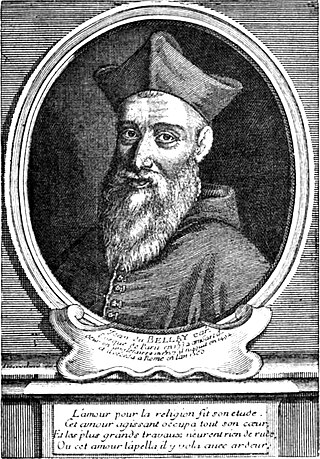
Jean du Bellay was a French diplomat and cardinal, a younger brother of Guillaume du Bellay, and cousin and patron of the poet Joachim du Bellay. He was bishop of Bayonne by 1526, member of the Conseil privé of King Francis I from 1530, and bishop of Paris from 1532. He became Bishop of Ostia and Dean of the College of Cardinals in 1555.
French literature generally speaking, is literature written in the French language, particularly by citizens of France; it may also refer to literature written by people living in France who speak traditional languages of France other than French. Literature written in the French language by citizens of other nations such as Belgium, Switzerland, Canada, Senegal, Tunisia, Algeria, Morocco, etc. is referred to as Francophone literature.

Jean-François de La Harpe was a French playwright, writer and literary critic.

Jean de Lorraine was the third son of the ruling Duke of Lorraine, and a French cardinal, who was archbishop of Reims (1532–1538), Lyon (1537–1539), and Narbonne (1524–1550), bishop of Metz, and Administrator of the dioceses of Toul, Verdun, Thérouanne, Luçon, Albi, Valence, Nantes and Agen (1538–1550). He was a personal friend, companion, and advisor of King Francis I of France. Jean de Lorraine was the richest prelate in the reign of Francis I, as well as the most flagrant pluralist. He is one of several cardinals known as the Cardinal de Lorraine.
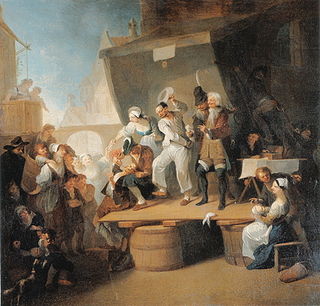
The barber surgeon, one of the most common European medical practitioners of the Middle Ages, was generally charged with caring for soldiers during and after battle. In this era, surgery was seldom conducted by physicians, but instead by barbers, who, possessing razors and dexterity indispensable to their trade, were called upon for numerous tasks ranging from cutting hair to pulling teeth to amputating limbs.
French Renaissance literature is, for the purpose of this article, literature written in French from the French invasion of Italy in 1494 to 1600, or roughly the period from the reign of Charles VIII of France to the ascension of Henry IV of France to the throne. The reigns of Francis I and his son Henry II are generally considered the apex of the French Renaissance. After Henry II's unfortunate death in a joust, the country was ruled by his widow Catherine de' Medici and her sons Francis II, Charles IX and Henry III, and although the Renaissance continued to flourish, the French Wars of Religion between Huguenots and Catholics ravaged the country.

Sebastian Gryphius was a German bookseller-printer and humanist.

Claude-François Ménestrier was a French heraldist, writer, member of the Society of Jesus [Jesuit], and attendant of the royal court.

Kilien Stengel is a French gastronomic author, restaurateur, and cookbook writer. He has worked at Gidleigh Park, Nikko Hotels, Georges V Hotel in Paris, and in a number of Relais & Châteaux restaurants.
François Nau was a French Catholic priest, mathematician, Syriacist, and specialist in oriental languages. He published a great number of eastern Christian texts and translations for the first and often only time.
Michel, chevalier de Cubières was an 18th-century French writer, known under the pen-names of Palmézaux and Dorat-Cubières, taking the latter name as he had Claude Joseph Dorat as his master.
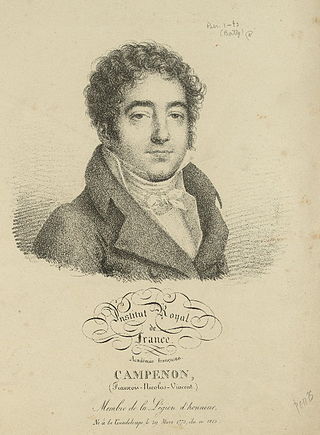
François Nicolas Vincent Campenon was a French poet and translator from Latin and English.
The year 1540 in science and technology included a number of events, some of which are listed here.
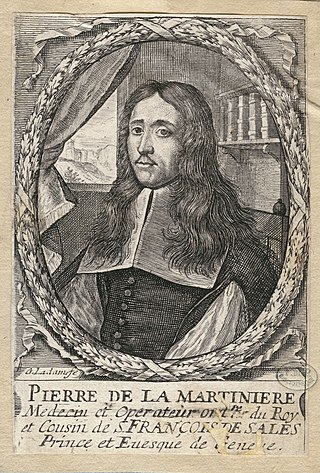
Pierre Martin de La Martinière was a French physician, surgeon and explorer.
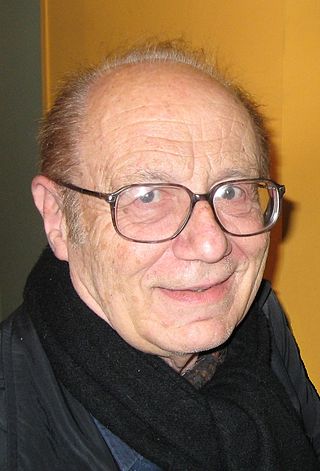
Pierre Bourgeade was a French man of letters, playwright, poet, writer, director, journalist, literary critic and photographer. A descendant of Jean Racine, he was also the brother-in-law of the writer Paule Constant.
Jean Canappe was a French physician who was attached to Francis I of France in 1542. He sometimes wrote under the pseudonym Philiatros and was known because he contributed to the transmission of medical and surgical knowledge in French with Pierre Tolet.
The Prix Bordin is a series of prizes awarded annually by each of the five institutions making up the Institut Français since 1835.
The Prix Saintour is a series of prizes awarded annually by each of the five institutions making up the Institut de France since 1835.

The Passages d'outremer is a chronicle of the crusades written in Middle French by Sébastien Mamerot in 1473–1474. Drawing freely on legendary material, it covers the wars between Catholics and Muslims from the time of Charlemagne until 1462.
References
- 1 2 3 Dulieu, Louis (January 1991). "La pédiatrie à l'Ecole de médecine de Montpellier à la fin de la Renaissance". Littératures classiques (Enfance et littérature au XVIIe siècle) (in French). 14: 227–229. doi:10.3406/licla.1991.1281.
- ↑ Saint-Léger, Guy (2004). François Rabelais: médecin montpelliérain (in French). Le plein des sens. p. 29. ISBN 9788790493851 . Retrieved 12 March 2021.
- 1 2 Evelyne Berriot-Salvadore (2010). "La littérature médicale en français de 1500 à 1600". bium.univ-paris5.fr (in French). Retrieved 11 March 2021.
- ↑ François Grudé de La Croix Du Maine (1772). Les bibliothèques françaises (in French). Vol. 8. Saillant. p. 330. Retrieved 11 March 2021.
- ↑ Rancourt, Guy. "Mots d'art & Scénarios". Ginette Villeneuve (in French). Retrieved 11 March 2021.
- ↑ Andrea Carlino; Michel Jeanneret (2009). Vulgariser la médecine; du style médical en France et en Italie, XVIe et XVIIe siècles (in French). Genève: Librairie Droz. ISBN 978-2-600-01263-8 . Retrieved 11 March 2021.
- ↑ Archives historiques et statistiques du département du Rhône (in French). Barret. 1827. Retrieved 11 March 2021.
- ↑ Pierre Tolet (1540). La chirurgie de Paulus Aegineta : qui est le sixiesme livre de ses oeuvres. item, un opuscule de Galien, Des tumeurs contre nature. plus, un opuscule dudict Galien, De la manière de curer par abstraction de sang / le tout traduict de latin en françois par maistre Pierre Tolet (in French). Lyon: Estienne Dolet. Retrieved 11 March 2021.
- ↑ Pierre Tolet. De la raison de curer par Evacuation de Sang. Autheur Galien (in French). Lyon: Sulpice Sabon. Retrieved 11 March 2021.
- ↑ Pierre Tolet (1542). Des tumeurs oultre le coustumier de nature (in French). Lyon: Etienne Dolet. Retrieved 11 March 2021.
- ↑ Berriot-Salvadore, Evelyne (2010). "La chirurgie "faite française"" (in French). Retrieved 11 March 2021.
- ↑ Brown, Ted (1995). "Word Wars: The Debate over the Use of the Vernacular in Medical Writings of the English Renaissance". Texas Studies in Literature and Language. University of Texas Press. 37 (1): 98–113. JSTOR 40755062 . Retrieved 11 March 2021.
- ↑ Mirko D. Grmek (1997). La main, instrument de la connaissance et du traitement (in French). Seuil. pp. 225–227. ISBN 978-2-02-022140-5.
- ↑ Romain Debluë (2020-04-08). "La mort visible : des chiffres & des êtres". ZONE CRITIQUE (in French). Retrieved 2021-03-11.